hostipitality
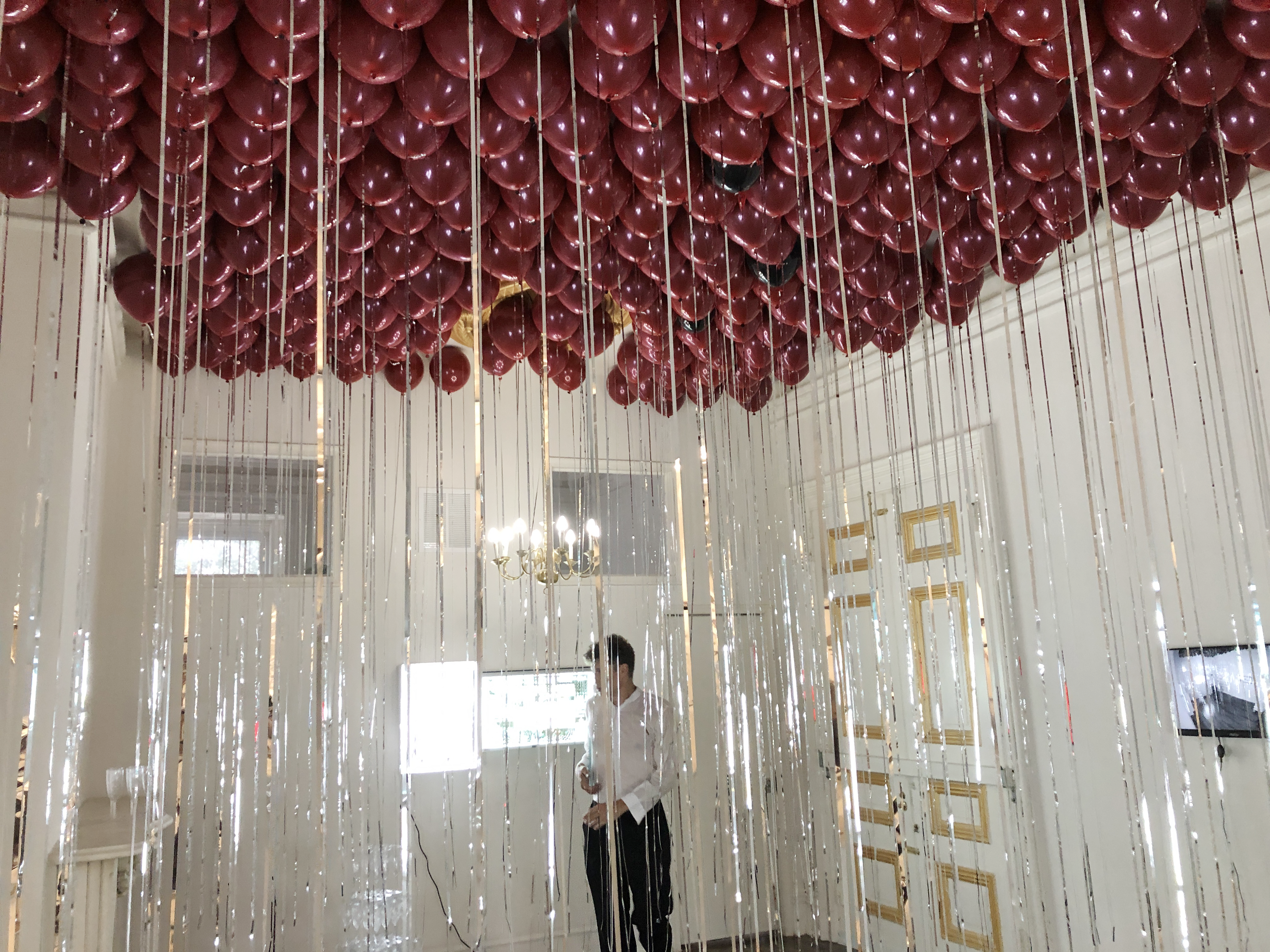

In Hostipitality, Misha Ilin investigates our laws of
hospitality with the practice of hostility through the situation of an auction.
By constructing a metaphor of unlimited hospitality in relation to the last
ultimately free resource, air, the artist seeks to problematize its
socio-economic reading within our biopolitical context.
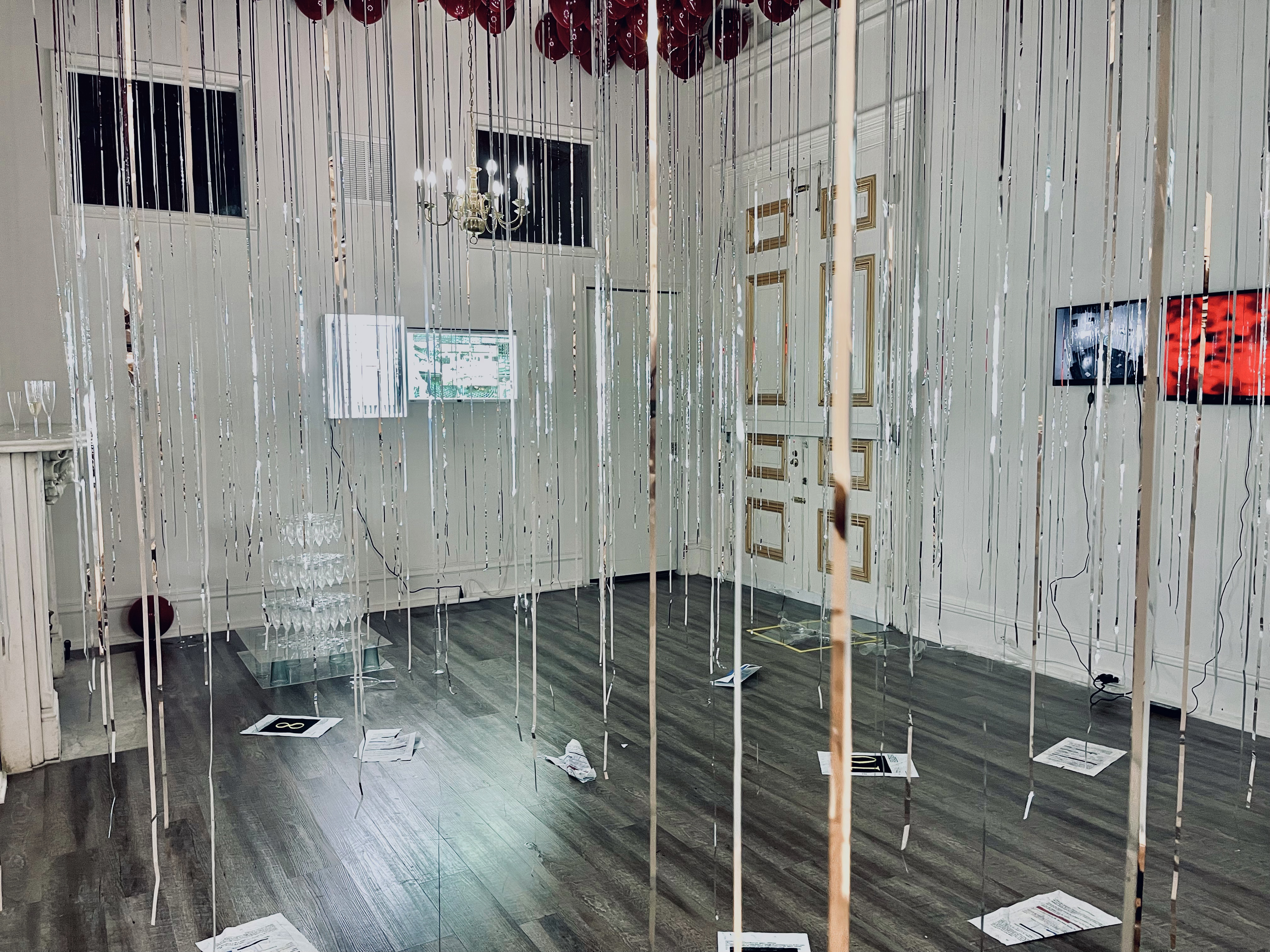
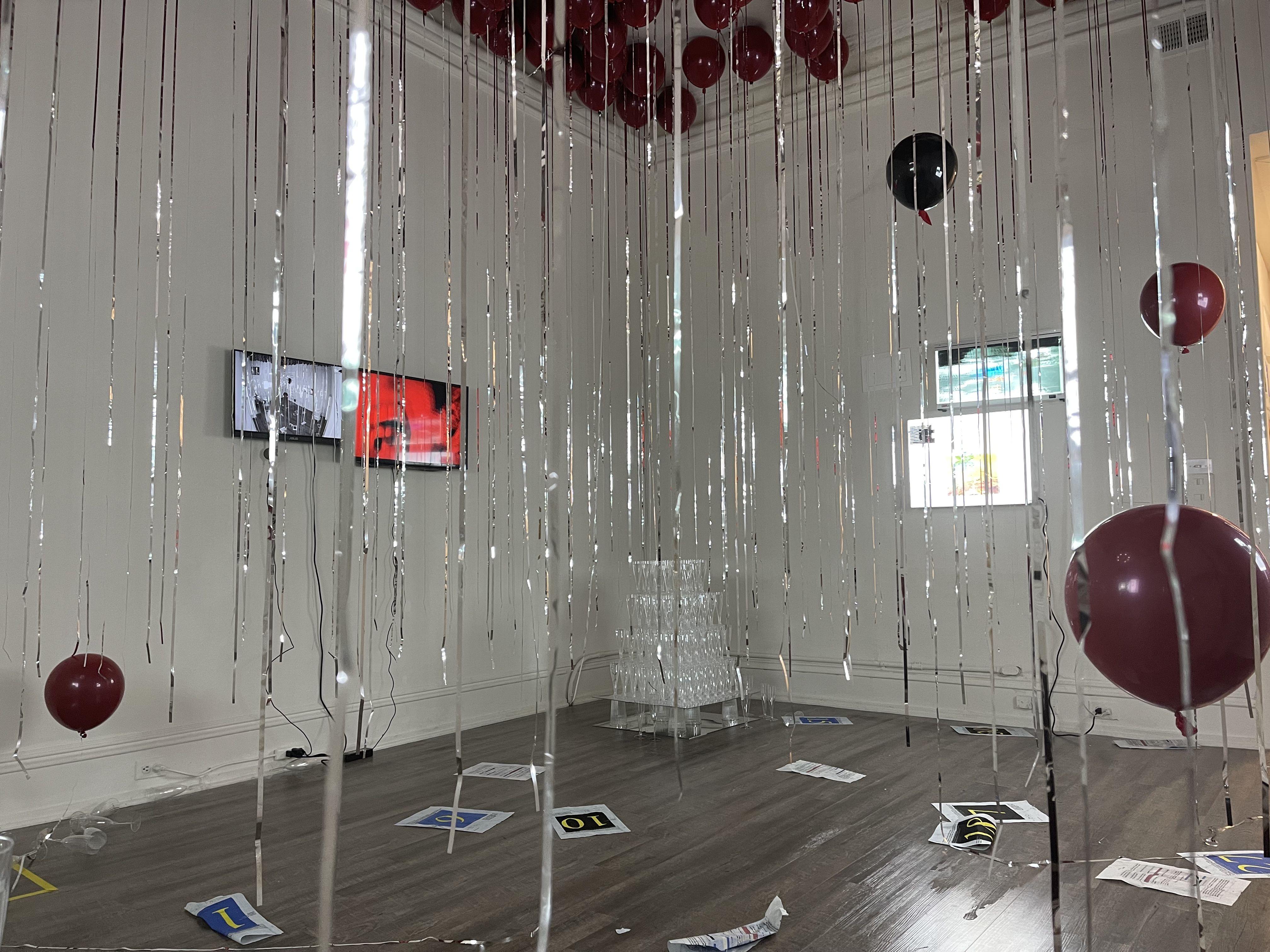
In this respect, the air is the main element of the
exhibition both formally and conceptually introduced into the exposition
through various objects that inform the viewer with the air’s presence or that
of absence. Artist seeks to highlight this contrast by creating an environment
of the celebration with objects that are transferring or containing air in
different forms, be it sparkling wine or balloons gradually deflating over the
duration of the show, staged in opposition to the x-ray lightboxes and screens,
which illuminate the images of the environment in which the air is absent or in
which one’s rights to the use of the air have been deprived.





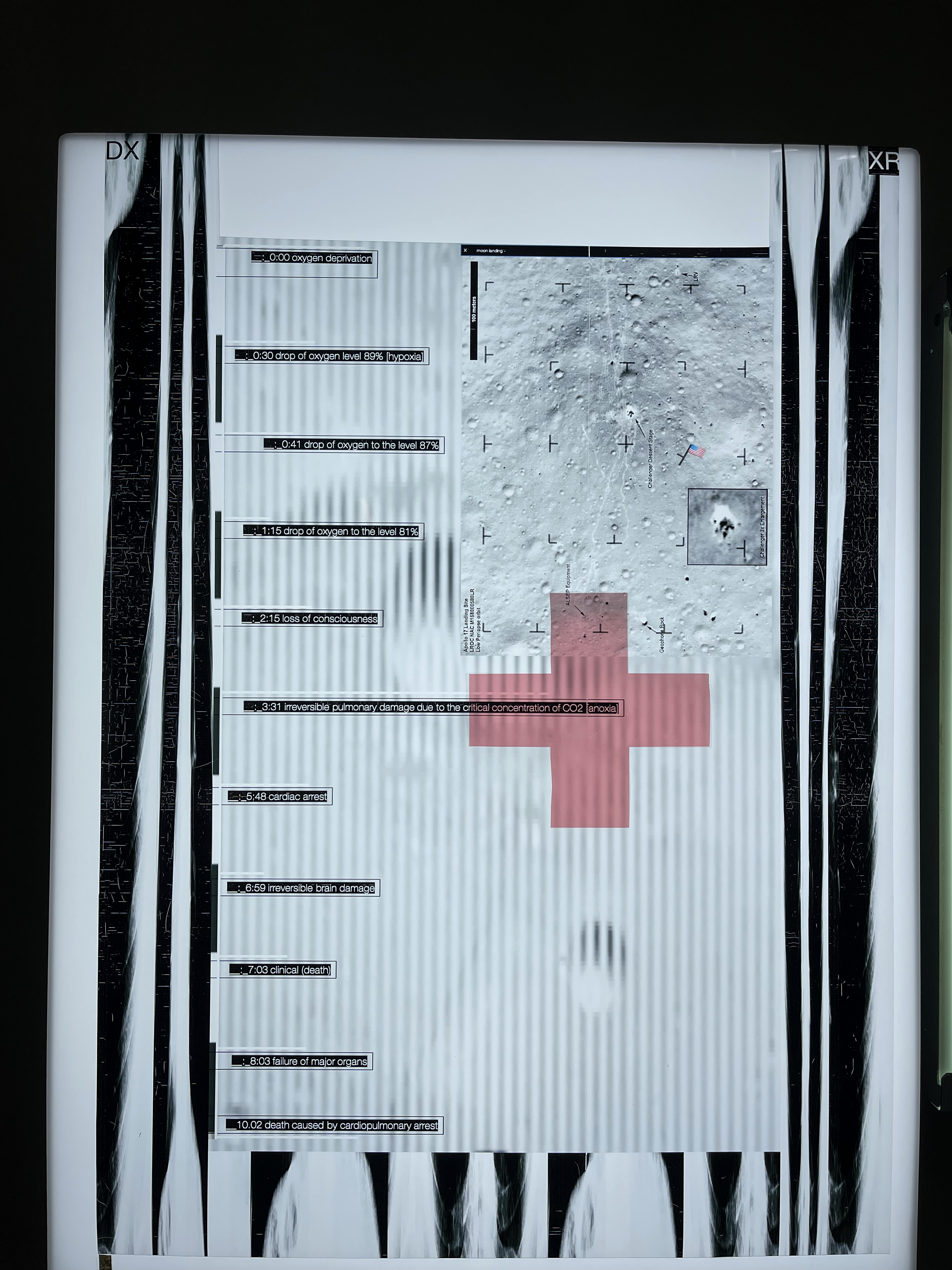



Per convention, the air is free and defines the limits of
our world and as an intangible element, prevents our environment from being
absolutely hostile in the literal and metaphoric sense. By considering
that the space of the gallery is not only a space of exhibition but also space
where the contract is set between the host and the guest concerning all the
matters of the gallery including the air which the gallery contains the artist
identifies a juncture where space of aesthetics transgresses into that of
politics.


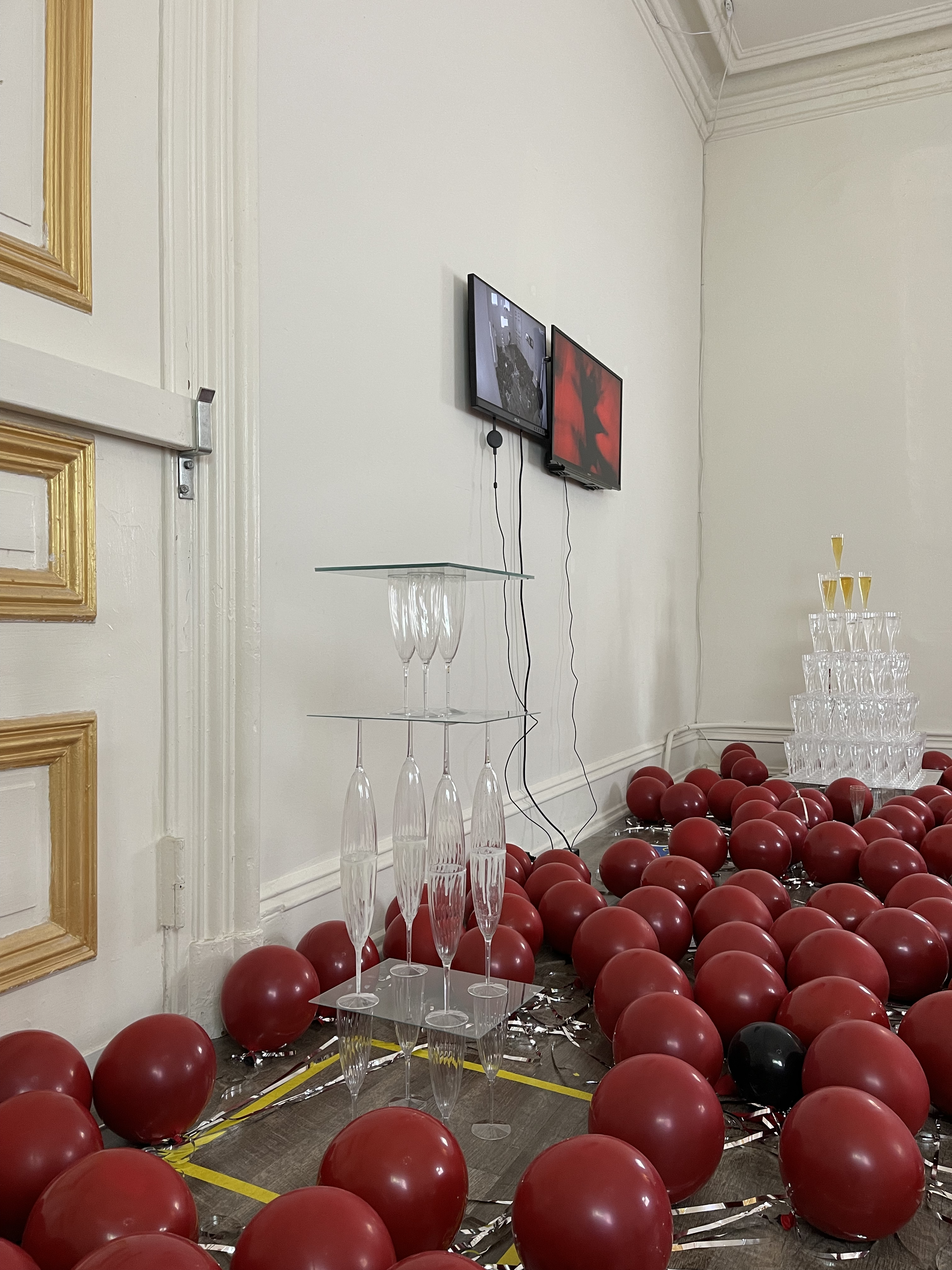

From this perspective, auctioning the air is not fraudulent or a senseless act. Furthermore, through this simple collective procedure of defining the air’s price, and thus the possibility of its possession, this unlimited intangible substance reveals the power of the host - be it the power of an individual, a state, or a planet - to provide, limit or deprive guests of this last element of hospitality- a priori available for all.


The air contained in the gallery was sold using a market structure of Dutch auction in which the auctioneer begins with a high asking price , and lowers it until some participant accepts the price, or it reaches a predetermined reserve price.
*This type of price auction is most commonly used for goods that are required to be sold quickly such as flowers, fresh produce (read easily spoiled), also used a auction method to sell u.s. bonds at U.S. stock exchange.
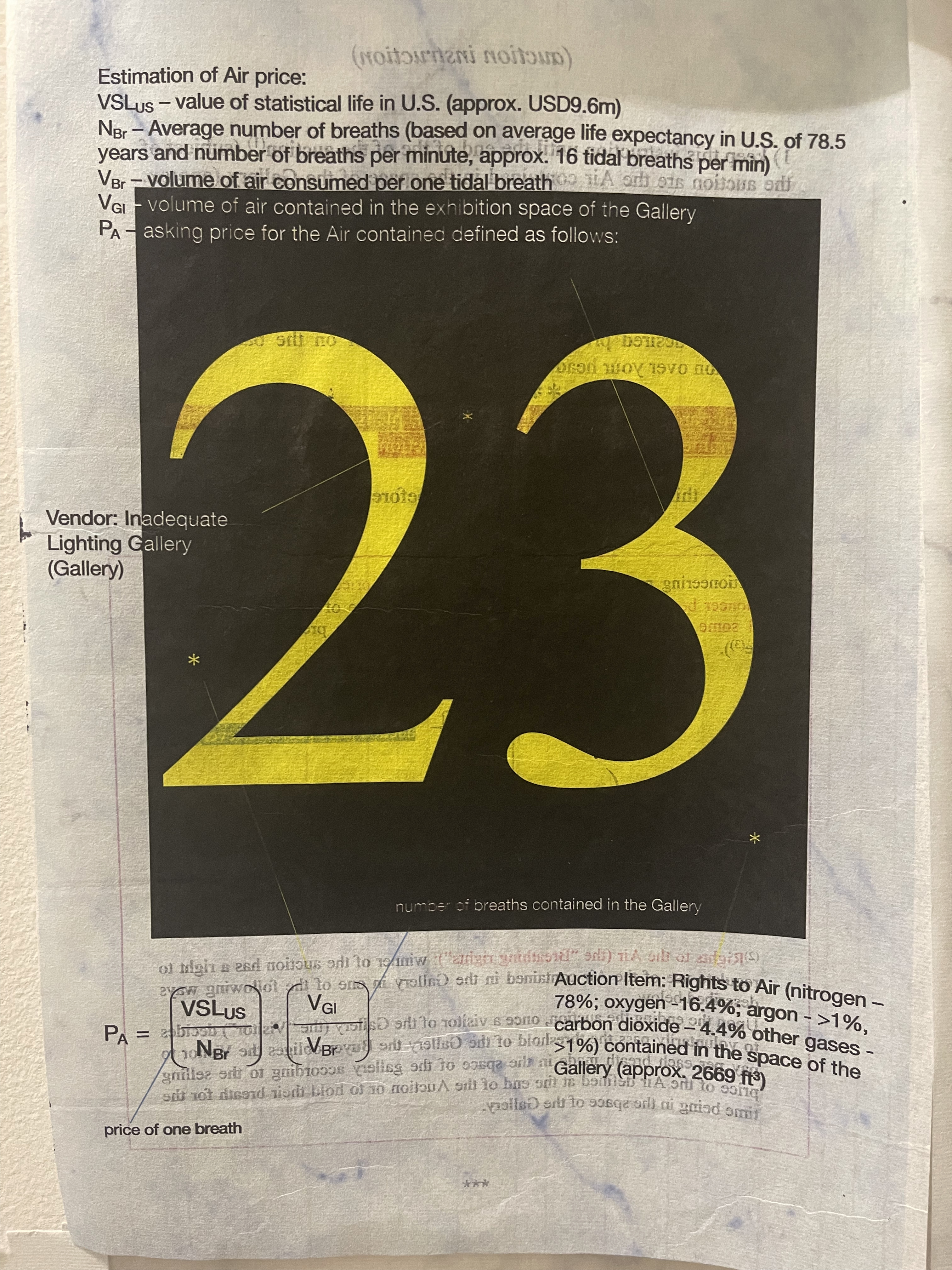
Asking price for the air was defined based on price of human life according to the U.S. transportation agency (around USD3m). For instance price of human life accoding to transportation agency of Australia is arond USD9m, in Russia around USD400ths. To estimate a price of an air contained in the gallery space I used the average number of tidal breaths a person makes during the their life (considering the life expectancy for U.S. citizen of 77 years, 20 breaths per minute, each american citizen makes around 600mln tidal breaths during their lifetime). That brings the cost of one breath in U.S. to approx. 1c. Considering the volume of air contained in the gallery space and number of breaths to be made to inhale it completely was defined the price of the air in the gallery space (asking price) of USD2166.
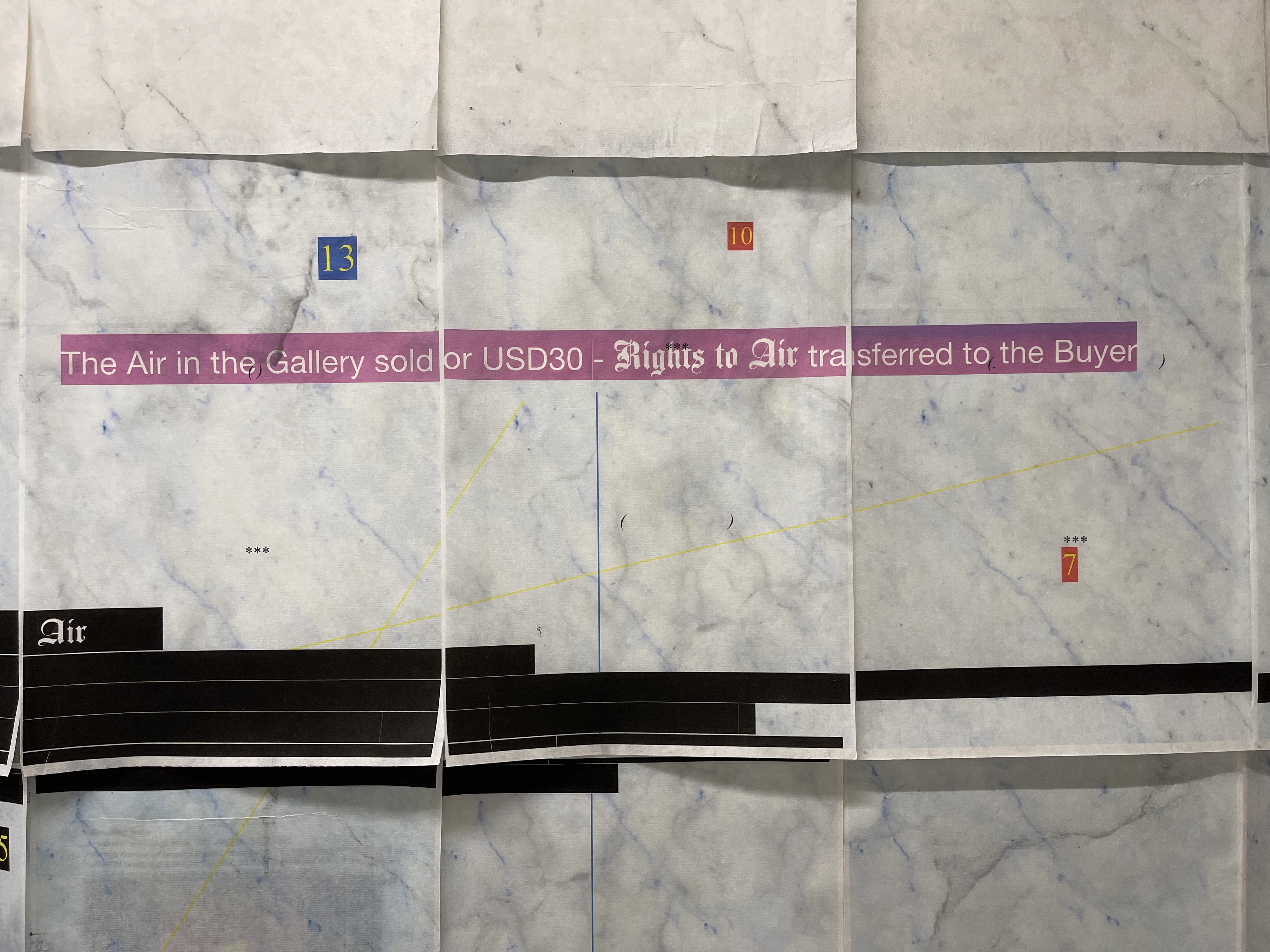
 If the sale of air was to happen the rights on the air contained in the gallery space would be transferred to the winner of the auction. And the attendees of the auction to be asked to free the space. Over the following two weeks these rights on air would define a rules for use of the air for the visitors of the gallery. According to these rights the visitor of the gallery has to:
If the sale of air was to happen the rights on the air contained in the gallery space would be transferred to the winner of the auction. And the attendees of the auction to be asked to free the space. Over the following two weeks these rights on air would define a rules for use of the air for the visitors of the gallery. According to these rights the visitor of the gallery has to: > pay for each breath made in the space of the gallery,
< hold their breath while walking inside the space of the gallery
> look from outside of the space of the gallery.
>

(afterword)
By contemplating on current practices of hostility, the artist expands the host-guest relationship from family structures to the nation’s immigration policies, as well as practices of cultural, environmental, and political repressions by the state toward its own citizens. By understanding that a globalized world is unwelcoming to everyone, or in other words that the world turned hostile to itself, Ilin sees in it one of the reasons why we re-enact our desire for different forms of escape or utopias, the recent of all, our dream to escape to another planet.
>By contemplating on current practices of hostility, the artist expands the host-guest relationship from family structures to the nation’s immigration policies, as well as practices of cultural, environmental, and political repressions by the state toward its own citizens. By understanding that a globalized world is unwelcoming to everyone, or in other words that the world turned hostile to itself, Ilin sees in it one of the reasons why we re-enact our desire for different forms of escape or utopias, the recent of all, our dream to escape to another planet.
The term hostipitality (blending hostility and hospitality) was
coined by Jacques Derrida, philosopher born Algerian and French, that describes
a relationship between a host and a guest when the hospitality practiced by the
host is never unlimited, and by being always conditioned to certain laws
defined by the host, it imposes some form of hostility towards the guest. For
Derrida, the host’s environment is never completely open and welcomes only
certain defined cultural and political identities. By seeking agreement and
reconciliation within itself, it eventually tends to expunge any possible
difference or alteration, ultimately becoming self-referential, which is the
worst form of hostility. Hence, the main question for Derrida is if one ever
experienced a condition of unlimited hospitality. By unfolding Derrida’s
inquiry in the setting of the exhibition, the artist seeks to challenge the
possibility of such conditions of unlimited hospitality and contemplate what is
this condition of ultimate hospitality would look like.
***
